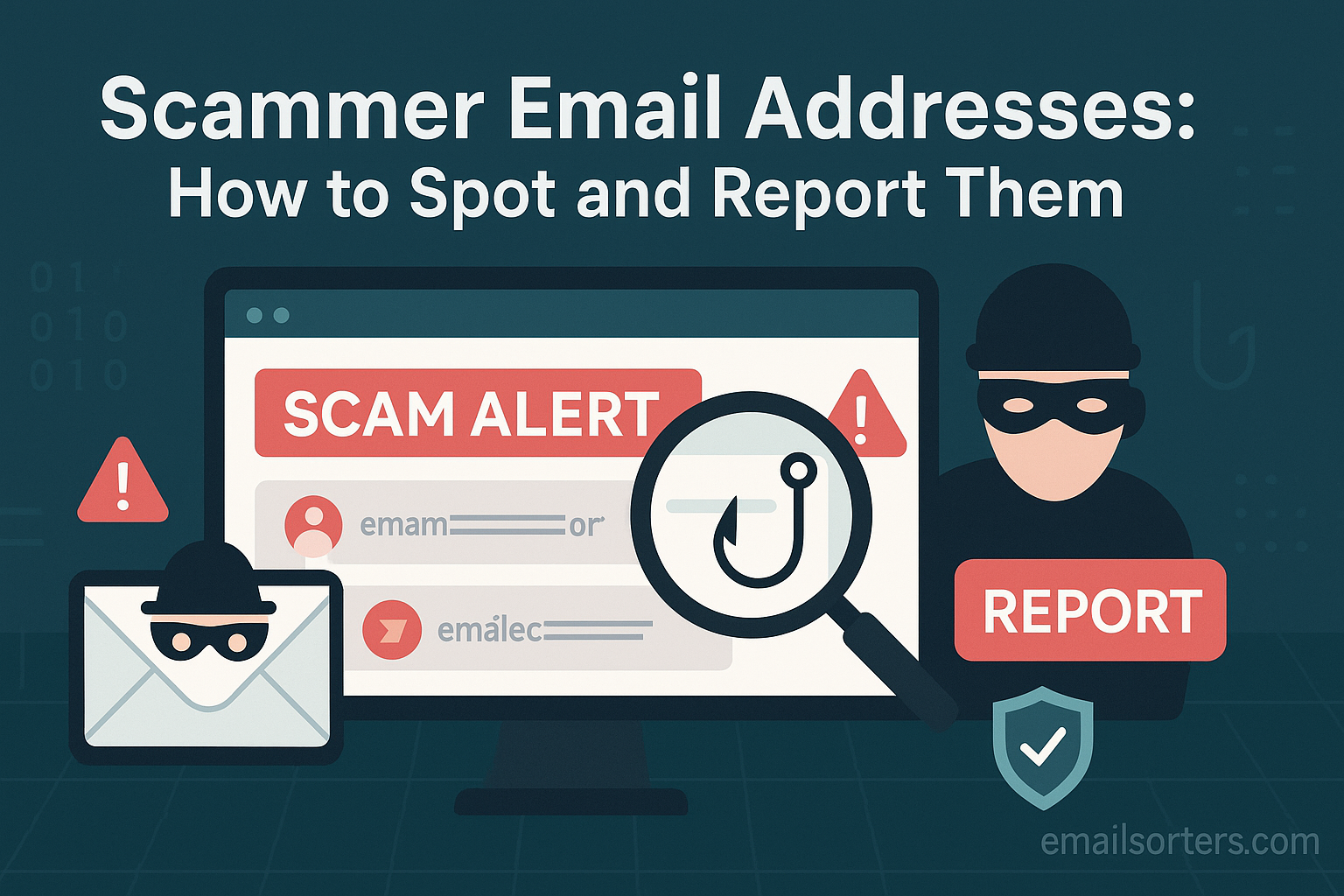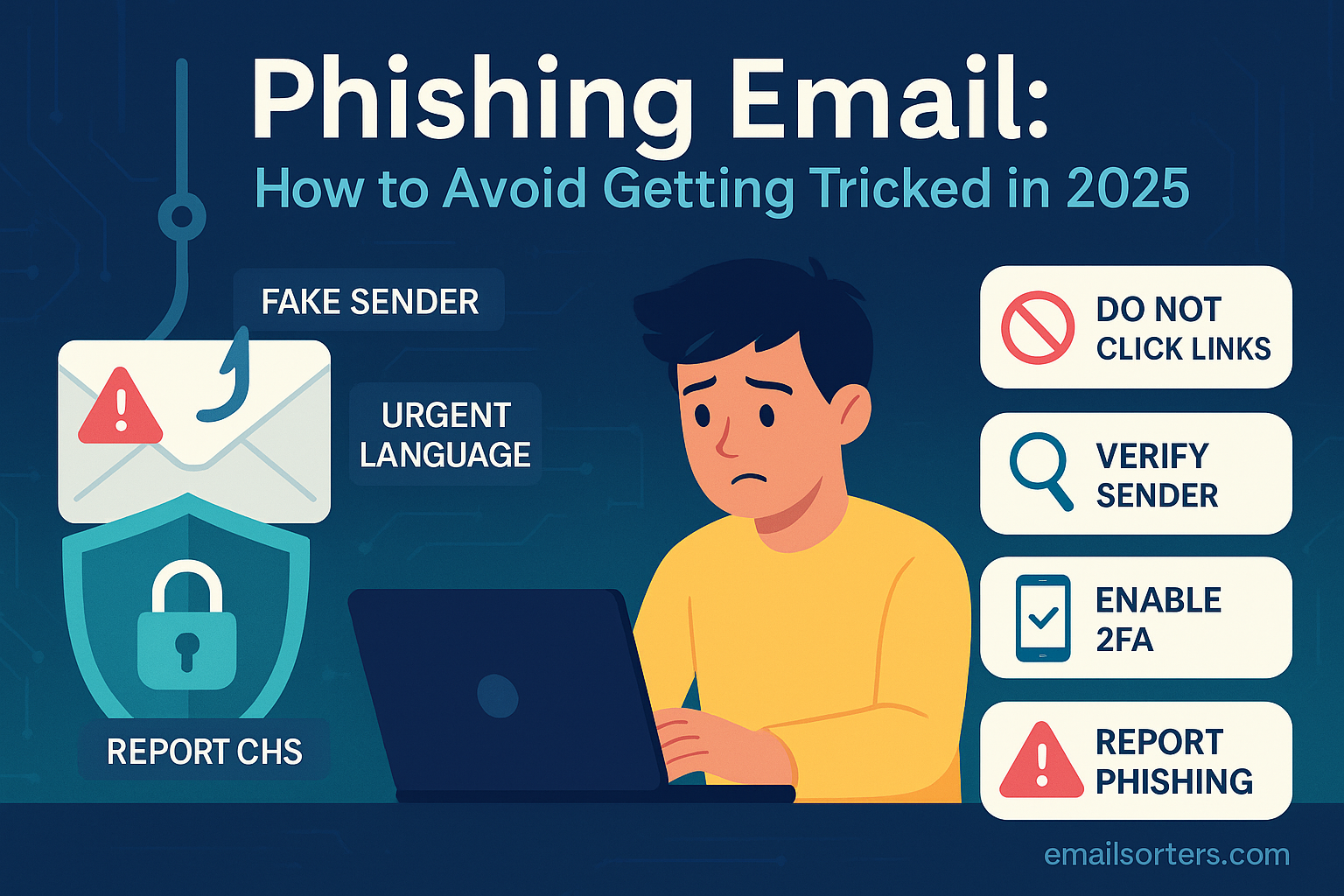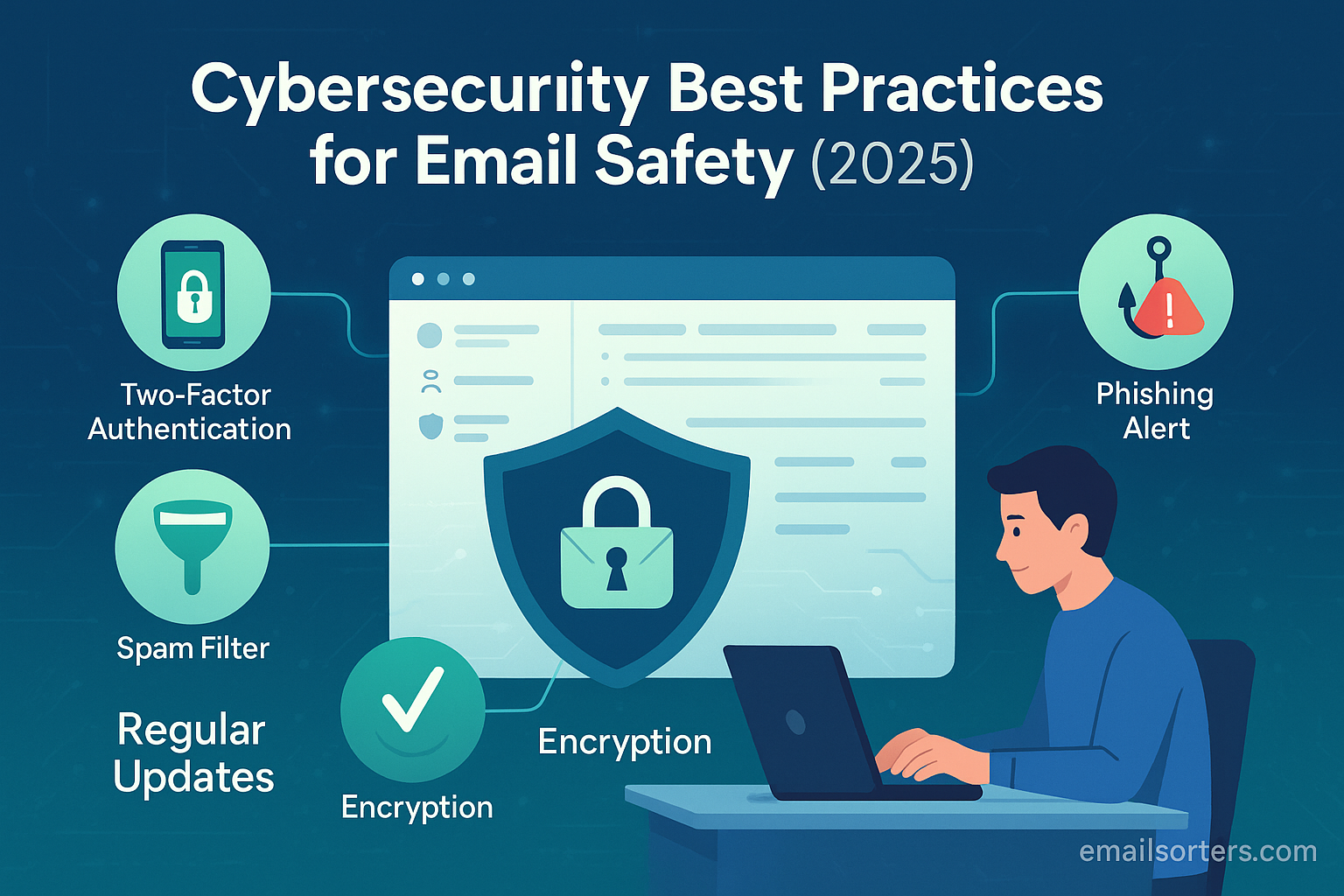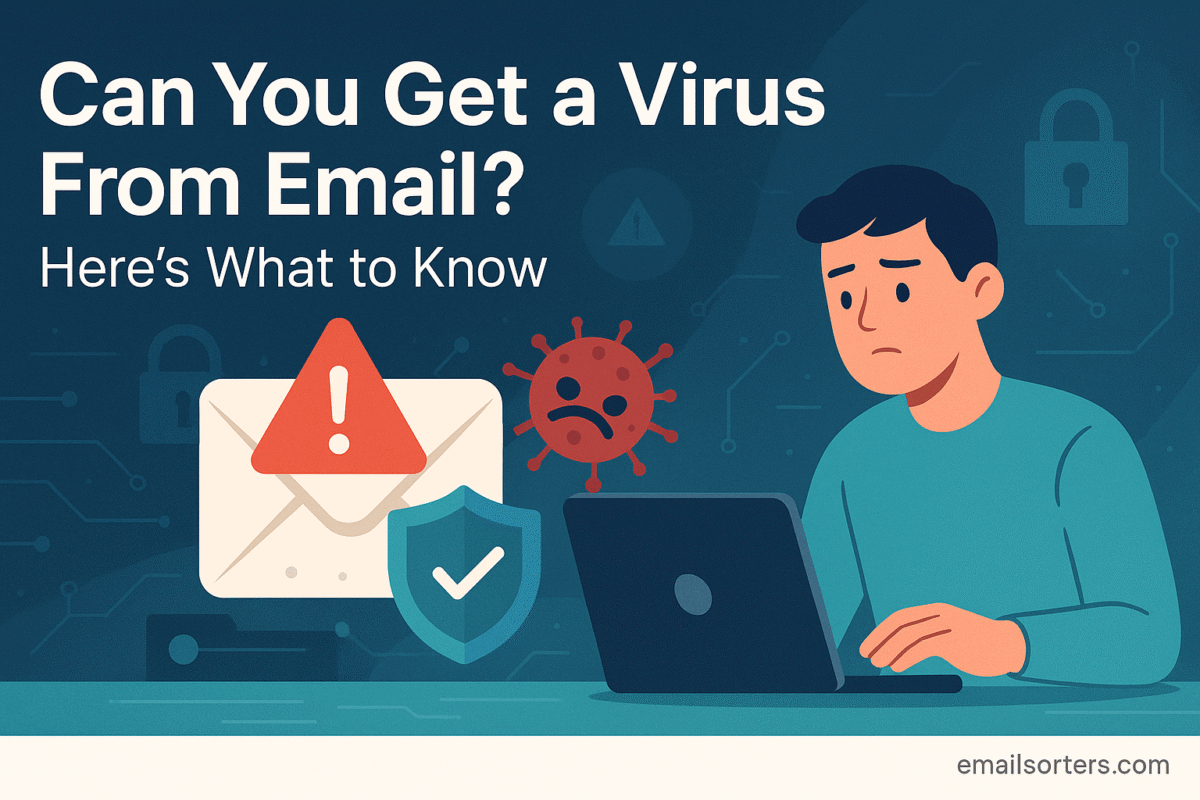Scammer email addresses can look shockingly real. They might claim to be your bank, a major retailer, or even a government agency, complete with the right logo and a familiar-sounding name. The message feels urgent: verify your account, update payment details, or claim a prize. For a second, you pause. Something’s not quite right, but you can’t put your finger on it. That moment is critical, it’s the thin line between staying safe and getting scammed.
This experience is the frontline of a constant battle for control of your inbox, and the sender’s email address is the first and most important clue. Scammers have become masters of digital disguise, creating and manipulating email addresses to appear legitimate, all with the goal of tricking you into taking a harmful action. This act of deception is the cornerstone of phishing, a pervasive cyber threat designed to steal your credentials, money, and personal identity.
The desire to navigate your digital life with confidence—to instantly recognize a fraudulent message and discard it without a second thought—is not just about avoiding annoyance. It is about actively protecting yourself from financial loss and identity theft. Fortunately, spotting a scammer’s email address is a skill that anyone can learn. This guide will provide you with a definitive playbook to dissect, identify, and report fraudulent email addresses, empowering you to become a vigilant guardian of your own inbox.
The Anatomy of a Deception: What is a Scammer Email Address?
A “scammer email address” is any email address that is created, manipulated, or forged with the specific intent to deceive a recipient. Its purpose is to build a false sense of trust, making it easier to execute a scam. These addresses are not just random strings of characters; they are often carefully crafted to impersonate a trusted entity. They generally fall into two main categories:
- Deceptively Created Addresses: These are addresses created on free, public email platforms like Gmail, Outlook, or Yahoo. The scammer will try to make the username look official. For example, an address like paypal.customer.service.dept@gmail.com is designed to trick a user into thinking it is from PayPal, even though it is hosted on a public domain. Legitimate corporations will almost never use a public email service for official communication.
- Technically Manipulated Addresses: These are more sophisticated fakes that involve manipulating the technical components of an email address. This includes creating look-alike domains that mimic legitimate ones or using advanced techniques like email spoofing to forge the sender’s address entirely.
The Scammer’s Toolkit: Common Disguise Tactics
Scammers use a variety of clever tricks to make their fraudulent addresses look convincing. Understanding these tactics is the first step toward spotting them.
The Look-Alike Domain (Typosquatting)
This is one of the most common and effective techniques. A scammer registers a domain name that is a slight variation of a legitimate one, hoping that a user will not notice the difference. This is also known as “typosquatting.” Common tricks include:
- Character Substitution: Replacing one character with a visually similar one. For example, using a number 0 instead of the letter O (e.g., micros0ft.com) or a capital I instead of a lowercase l (e.g., appIe.com).
- Adding or Omitting Letters: Creating a domain like amazon-support.com or amazonsupport.co instead of the real amazon.com.
- Using Different Top-Level Domains (TLDs): Registering paypal.xyz or netflix.info and hoping the user focuses on the brand name rather than the unusual TLD.
The Subdomain Trick
This tactic uses a legitimate brand name as a subdomain of a domain the scammer owns. For example, an email from support@apple.security-alert.com. To the untrained eye, the word “apple” stands out. However, the actual domain is security-alert.com, which is controlled by the scammer. The apple. part is just a label they created.
The Display Name Deception
This is the simplest disguise. An email client separates the sender’s “Display Name” from their actual email address. A scammer can set their display name to “Apple Support” or “Your Bank’s Fraud Department,” while the underlying email address is a random, nonsensical string of characters like user129x8z@random-domain.net. In a mobile client or a preview pane, the user may only see the deceptive display name and assume the email is legitimate.
The Role of Email Spoofing
Email spoofing is the most advanced form of deception. In this case, the scammer forges the email header so that the From: address appears to be exactly the same as the legitimate one. The email looks like it truly came from support@yourbank.com. This is possible due to inherent weaknesses in the internet’s email protocols. While users can look for other clues, the primary defense against this technique happens at the server level. Learning how to stop spoofing involves implementing technical standards like SPF, DKIM, and DMARC, which help email servers verify a sender’s identity.
Red Flags: How to Spot a Fraudulent Email Address
You do not need to be a technical expert to identify most scammer emails. By developing a habit of careful inspection, you can spot the majority of fakes.
- Check the Domain Name Carefully: This is the most important step. Does the domain part of the address (the text after the @ symbol) match the official website of the company? Look for single-character differences. An email from support@microsoft.security.com is fake; the real domain is microsoft.com.
- Beware of Public Domains: A legitimate company will never use a public email domain for official communication. If you get an email from amazon.service@yahoo.com or apple.id.support@gmail.com, it is a scam.
- Don’t Trust the Display Name: Always click or tap on the sender’s name to reveal the full email address hiding behind it. A deceptive display name is a massive red flag.
- Look for Unnecessary Urgency or Generic Greetings: Scammer emails often use generic greetings like “Dear Valued Customer” and create a false sense of urgency (e.g., “Your account will be suspended in 24 hours”).
- Analyze the Overall Quality: Look for poor grammar, spelling mistakes, and low-quality logos. Legitimate corporations have professional communication standards.
The Malicious Goal: Phishing and Scammer Emails
A scammer’s email address is not the end goal; it is merely the delivery vehicle for the actual attack. The overwhelming purpose of these emails is to conduct phishing. A phishing email is a fraudulent message designed to trick you into revealing sensitive information or taking a harmful action.
The fake address builds the initial trust needed to make the scam believable. Once that trust is established, the email will typically try to:
- Steal Your Credentials: The email will contain a link to a fake login page that looks identical to the real one (e.g., a fake Netflix or banking portal). When you enter your username and password, the scammer captures it.
- Install Malware: The message may contain an attachment disguised as an invoice, a shipping notification, or an important document. Opening this file can install ransomware, spyware, or other malware on your device.
- Elicit a Financial Transaction: In BEC scams, the email will impersonate a superior or a vendor to authorize a fraudulent payment to an account controlled by the scammer.
Understanding these tactics is key to learning how to avoid phishing emails and recognizing the danger that a suspicious address represents.
Taking Action: How to Investigate and Report Scammers
When you receive a suspicious email, it is important to know what to do—and what not to do.
Safe Investigation Techniques
- First and foremost: DO NOT REPLY. Replying to a scam email, even to tell them off, simply confirms that your email address is active and monitored. This makes your address more valuable to them, and you will likely receive even more spam and scam attempts.
- Do not click any links or download any attachments. This is how the primary attack is delivered.
- Hover over links to preview them. Before clicking any link, rest your mouse cursor over it. Your browser or email client will display the actual destination URL in a corner of the screen. If this URL does not match the official domain of the purported sender, it is fraudulent.
- Conduct an independent search. If an email claims to be from a certain company, open a new browser window and search for that company’s official website yourself. Log in there to check for any notifications. Do not use the links provided in the email.
Step-by-Step Reporting Guide
Reporting scammer email addresses is a crucial step in protecting yourself and the wider community.
- Use Your Email Provider’s Built-in Tools: This is the most important action you can take. In Gmail, Outlook, or Yahoo, select the suspicious email and find the “Report Spam” or “Report Phishing” option. This not only removes the email from your inbox but also sends critical data to the provider, helping them improve their filters to block similar attacks for everyone.
- Report the Email to the Impersonated Company: Most large companies have a dedicated email address for reporting abuse. For example, you can forward phishing emails to phishing-report@us-cert.gov, reportphishing@apwg.org, or find the specific abuse address for the company being impersonated (e.g., abuse@microsoft.com or spoof@paypal.com). This helps them take action against the fraudulent domains.
- Block the Sender: After reporting the email, block the sender’s address to prevent them from contacting you again from that specific address.
Building Your Digital Shield: Long-Term Prevention Strategies
While reacting to threats is important, the best defense is a proactive one. By adopting strong security habits, you can significantly reduce your risk of falling victim to scams originating from fraudulent email addresses.
- Cultivate Healthy Skepticism: Treat every unexpected email with a degree of caution. Always take a moment to verify the sender’s address and analyze the message for red flags before taking any action.
- Use Strong, Unique Passwords: Use a different, complex password for every online account. This way, even if you are tricked into revealing the password for one site, the rest of your accounts remain secure. A password manager can help you manage this.
- Enable Two-Factor Authentication (2FA): 2FA provides a critical layer of security by requiring a second verification code (usually from your phone) in addition to your password. Even if a scammer steals your password, they will be unable to access your account without this second factor.
- Be Mindful of Your Digital Footprint: Avoid posting your primary email address in public places like forums, comment sections, or social media bios, where it can be easily harvested by bots.
- Embrace Comprehensive Cybersecurity Habits: These individual tactics are most effective when they are part of a broader security mindset. Following established cybersecurity best practices, such as keeping your software updated and being cautious on public Wi-Fi, creates a resilient defense against a wide range of threats.
Conclusion
The scammer email address is the Trojan horse of the digital age—a carefully constructed disguise designed to breach your defenses by exploiting your trust. Recognizing these forgeries is no longer an optional skill for the tech-savvy; it is an essential competency for anyone who uses email.
The power to protect yourself lies in vigilance and knowledge. By learning the common tactics scammers use, from look-alike domains to display name deception, you can strip away their disguises. By consistently applying best practices—scrutinizing senders, verifying requests through separate channels, and using the reporting tools at your disposal—you move from being a potential target to an active defender. Embrace this proactive role, and you will not only secure your own inbox but also contribute to creating a safer and more trustworthy digital environment for everyone.




